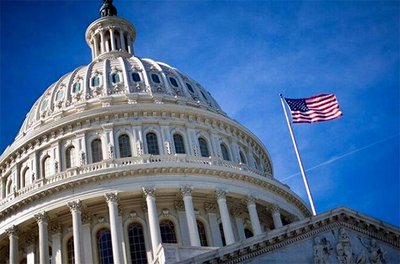
On the night of April 11th, the US Customs and Border Protection (CBP) released a new tariff exemption policy in a very low-key manner through a specific information platform. This exemption involves electronic products such as smartphones, laptops, and chips, which has sparked widespread attention and speculation worldwide. The relaxation of tariffs by the United States late at night is driven by complex economic, political, and strategic logic.
From an economic perspective, the US government's decision is based on multiple considerations of economic interests.
The pressure on domestic American companies is an important factor. Tech giants such as Apple and Nvidia have long relied on overseas supply chains, especially in China. Taking Apple as an example, if new tariffs are implemented, the production cost of iPhones is expected to soar by 30%, and supply chain costs will also increase by $33 billion, which will have a huge impact on its market competitiveness and profits. In response to the crisis, Apple even urgently airlifted 600 tons of iPhones from India in an attempt to evade tariffs. The semiconductor industry is no exception. According to data from the Semiconductor Industry Association (SIA), China is the world's largest chip market (accounting for 35% of the global market), and over 50% of the revenue of American semiconductor equipment manufacturers such as Applied Materials and Panlin Group relies on exports to China. The implementation of tariffs will directly paralyze local research and development investment. These companies are pressuring the government through lobbying groups, threatening to cut domestic investment, which undoubtedly undermines Trump's core achievement of "manufacturing return" and forces the government to make adjustments in tariff policies.
The volatility of financial markets has also played a driving role in policy adjustments. The original tariff policy triggered a stock market crash and a sell-off of US bonds, prompting investors to question the "safe haven" status of US bonds and the US dollar. For example, after the news of tariffs spread, Apple's stock price plummeted, and its market value evaporated by over $640 billion in just a few days. The instability of the financial market will affect the overall stability and development of the US economy. In order to stabilize the financial market and mitigate the risk of economic recession, the government also needs to revise tariff policies.
There are different interest groups within the US government with conflicting demands. Interest groups represented by tech giants hope to reduce tariffs to maintain supply chain stability and market share; Some traditional industry interest groups hope to protect the local market through tariffs. This internal divergence makes it difficult for tariff policies to form a long-term stable direction. The relaxation of tariffs late at night this time may be a temporary balance and compromise sought by the government among different interest groups.
In addition, on the international political stage, the US tariff policy also affects its relations with other countries. The previous practice of holding high the baton of "equivalent tariffs" has sparked dissatisfaction and counterattacks from many countries around the world, putting them in a relatively isolated position internationally. Adjusting tariff policies can to some extent ease tensions with other countries, improve the image of the United States in the international economic order, and regain a certain degree of discourse and influence.
Although tariffs on some electronic products have been relaxed this time, the US government is still pushing for an exemption clause for "US content ≥ 20%" (requiring a supply chain BOM list and proof of local content). This rule is interpreted as "soft decoupling", which forces companies to transfer some production capacity to Vietnam, Mexico and other places, attempting to reshape the global supply chain pattern, reduce dependence on countries such as China, while retaining key links of dependence on China, in order to maintain the dominant position of the United States in the global technology industry chain.
Although this exemption temporarily eased the crisis, Trump announced that he will announce the details of semiconductor tariffs on April 14th, and the policy is still full of variables. The United States attempts to maintain strategic deterrence against other countries in the technology industry through the uncertainty of this policy, making them wary in trade and technology cooperation with the United States, and thus occupying a favorable position in future global technology competition and industrial games.
The late night relaxation of tariffs by the United States is a product of multiple intertwined factors. This policy adjustment reflects the difficulties and challenges faced by the United States in the global economic landscape, as well as its complex means and strategic considerations in safeguarding its own interests. For other countries, it is necessary to recognize the logic behind this policy and respond to the changes in the global trade pattern with a more rational and pragmatic attitude, seeking their own development opportunities in the complex international economic environment.

In early December, US stocks staged their most dramatic intraday reversal in months. Driven by the dual positive catalysts of chip giant NVIDIA's better-than-expected earnings report and a "Goldilocks" nonfarm payrolls report, the S&P 500 index surged as much as 1.9% within the first hour of trading.
In early December, US stocks staged their most dramatic int…
On December 5, 2025, the European Union fined Musk's social…
Since October 2025, there has been a week of intense fighti…
On the global economic stage of 2025, the U.S. economy is s…
Recently, the head of Apple's artificial intelligence and t…
On December 5, 2025, the Office of the Compilers of the Cur…